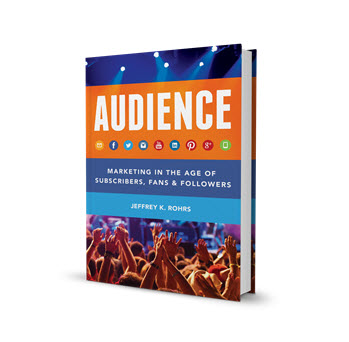The Flip-side of Content Marketing
"For the past few years, I’ve had a front row seat to the content marketing revolution. I bought into it hook, line, and sinker. Indeed, a decade ago, I was trying to convince clients to create more video content because “with instantaneous, worldwide distribution, every company is a publisher, broadcaster, and entertainer.” I’m sure many of you had similar conversations."
 For the past few years, I’ve had a front row seat to the content marketing revolution. I bought into it hook, line, and sinker. Indeed, a decade ago, I was trying to convince clients to create more video content because “with instantaneous, worldwide distribution, every company is a publisher, broadcaster, and entertainer.” I’m sure many of you had similar conversations.
For the past few years, I’ve had a front row seat to the content marketing revolution. I bought into it hook, line, and sinker. Indeed, a decade ago, I was trying to convince clients to create more video content because “with instantaneous, worldwide distribution, every company is a publisher, broadcaster, and entertainer.” I’m sure many of you had similar conversations.
However, there’s a funny ailment that you may encounter in content marketing circles. I call it “Assumptive Audience Disorder.” It is this belief that your content is so fabulous, so magnetic, that all you need to do is put it out on the web, and the Google Gods will shine brightly on you, delivering traffic beyond your wildest imagination. You would have thought that this “build it and they will come” mentality would have died thanks to the Internet bubble over a decade ago, but it seems to rear its head every few years with digital marketing’s channel du jour—and we have to relearn the same lesson over again: publication does not an audience make.
Content needs audiences to make an impact. Audiences need to content with which to engage. They are different sides of the same coin; and yet, while I can name you many non-publishing/broadcasting/entertainment companies with a Director of Content Marketing, I can’t name you one with a Director of Audience Development.
I think this has to change, and it’s why I wrote AUDIENCE: MARKETING IN THE AGE OF SUBSCRIBERS, FANS & FOLLOWERS out this Monday, November 11th from Wiley.
Proprietary Audience Development is now a core marketing responsibility—one that stretches horizontally across email, mobile, social, and web channels. Proprietary Audience Development demands investment not via occasional campaigns but via a permanent commitment of dollars, people, and attention that ensures our brands are building the size, engagement, and value of our subscribers, fans, and followers via everything we do.
We have long wrestled with a way to transform the C-Suite’s view of Marketing as a cost-center to a revenue-generation engine. To do this, however, we have been placing a lot of focus on channel and campaign ROI. What if we flipped the script a bit. What if we presented the CEO and CFO with a clear understanding of the inherent value of the various proprietary audiences we build, nurture, and maintain on behalf of the company? After all, if we have 1 million email subscribers and we know an email subscribers is worth $3 more per year than an average customer, aren’t we managing a $3 million dollar asset? And isn’t that an asset that as it grows helps all of our marketing—not just our content marketing—perform better?
I think this asset-based mentality is the key to unlocking some new respect in the C-Suite and some new thinking about roles within our Marketing departments. My sincere hope is that AUDIENCE might just serve as a catalyst for that conversation in the industry and spark the rise of Directors—if not VPs—of Audience Development. For in that horizontal, channel-agnostic, value-driven focus, we stand to build significant, proprietary advantage for our brands.

 How to resolve AdBlock issue?
How to resolve AdBlock issue? 